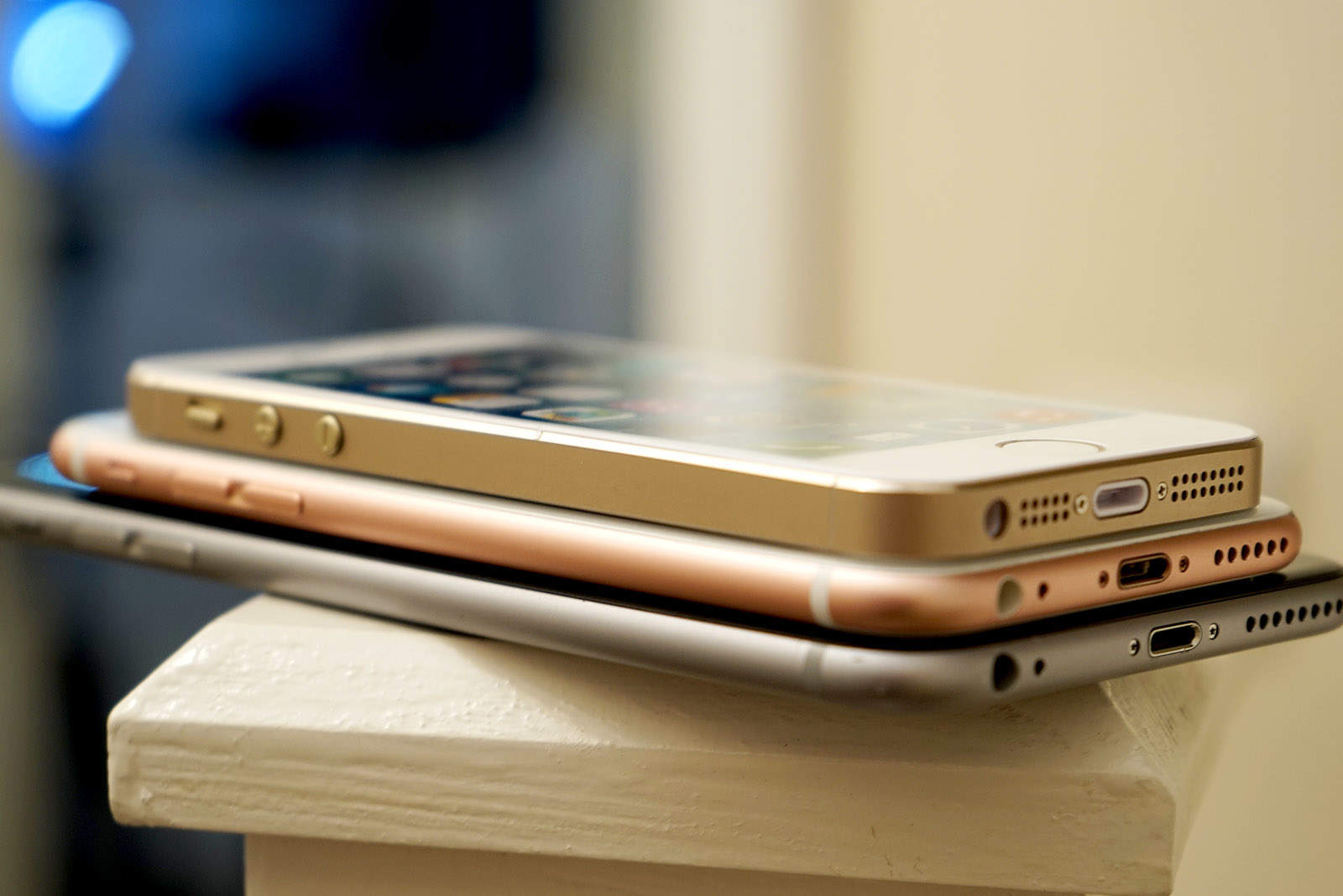The iPhone line just got more expansive, with the new, smaller-yet-powerful iPhone SE dropping into the fray to compliment the bigger and still powerful iPhone 6, iPhone 6s, iPhone 6 Plus and 6s Plus handsets.
So how do you choose the best iPhone? That depends on your own needs, of course, but we’re here to help you figure it all out with our iPhone buyer’s guide.
The 2016 iPhone lineup
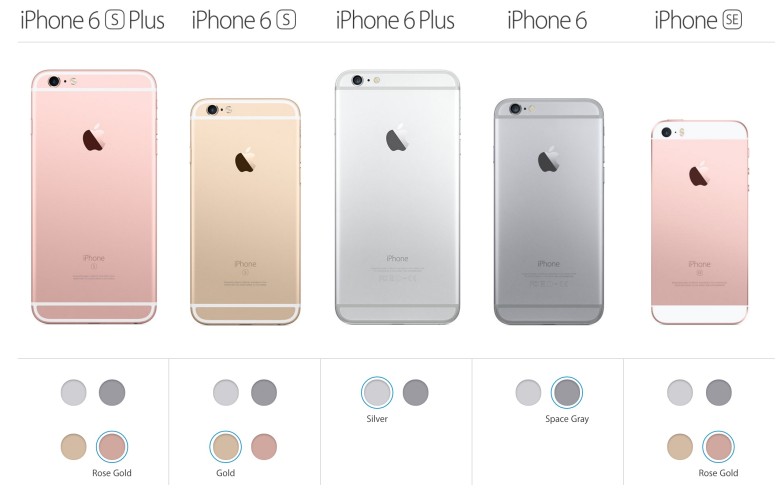
Photo: Apple
There are now five iPhone models available from Apple: The iPhone 6s, the iPhone 6s Plus, the iPhone 6 and 6 Plus, and now the iPhone SE. They all come in 16GB and 64GB capacities, while the newer S models also come in 128GB varieties. All five models have a Retina Display, but only the iPhone 6s and 6s Plus have the extra internals to support 3D Touch. The newer S models (and the SE) have four colors to choose from: Silver, Space Gray, Gold, and Rose Gold. The original 6 and 6s only comes in Silver or Space Gray.
iPhone portability
The iPhone 6 Plus and iPhone 6s Plus are both larger, with a 5.5-inch diagonal screen. The iPhone 6 and 6s have a useable 4.7-inch screen, while the new iPhone SE comes in at the minuscule 4-inch size.
The Plus models are 6.22 (6 Plus) or 6.23 (6s Plus) inches tall and 5.44 inches wide, and 2.8 or 2.9 (for the 6s Plus) inches thin. The 6s Plus weighs in at 6.77 ounces while the 6 Plus is only 6.07 ounces.
The 6 and 6s models are 5.44 inches tall and 2.64 inches wide and .27 and .28 inches thin, respectively. The 6s weighs 5.04 ounces and the iPhone 6 weights 4.55 ounces.
iPhone screen size and resolution
The Plus-sized models ring in a 1920-by-1080-pixel resolution at 401 pixels per inch (ppi), while the 6 and 6s have a 1334-by-750-pixel resolution at 326 ppi. The iPhone SE has a 1136-by-640-pixel resolution at 326 ppi. Every iPhone has what Apple is calling a Retina HD Display, though the newer iPhone SE is simply called a Retina Display. It also lacks the Dual-domain pixels of the larger 6 series iPhones for wide viewing angles.
iPhone performance
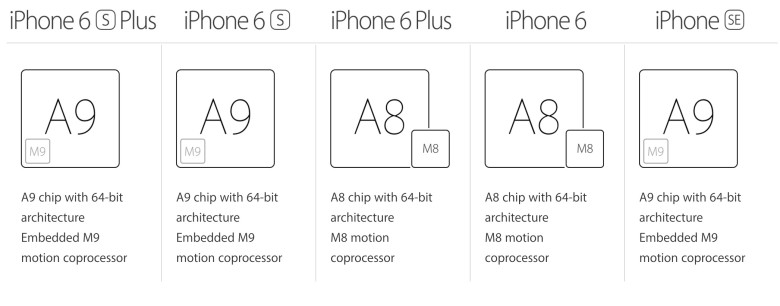
Photo: Apple
The chipsets are interesting, as the older iPhone 6 and 6 Plus share an A8/M8 CPU/Motion coprocessor chipset, with the 6s, 6s Plus and SE all containing a newer, faster embedded A9/M9 combination.
Touch ID is available on all iPhone models, though the 6s and 6s Plus both claim a “second-generation fingerprint sensor” built into the Home button. The iPhone SE only gets the first-generation Touch ID sensor, apparently. All iPhones, except the SE model, get a barometer.
Both Plus iPhones (the 6 Plus and the 6s Plus) have a longer battery life, with up to 24 hours of talk time on the 3G network and up to 16 days of standby power. The other three models, including the SE, offer up to 14 hours of talk time on the same 3G, with 10 days of standby time. The two Plus models and the SE model offer up to 12 hours of internet use on any type of network, while the smaller models (the 6 and the 6s) offer 10 hours on cellular, and 11 on Wi-Fi.
iPhone camera comparison
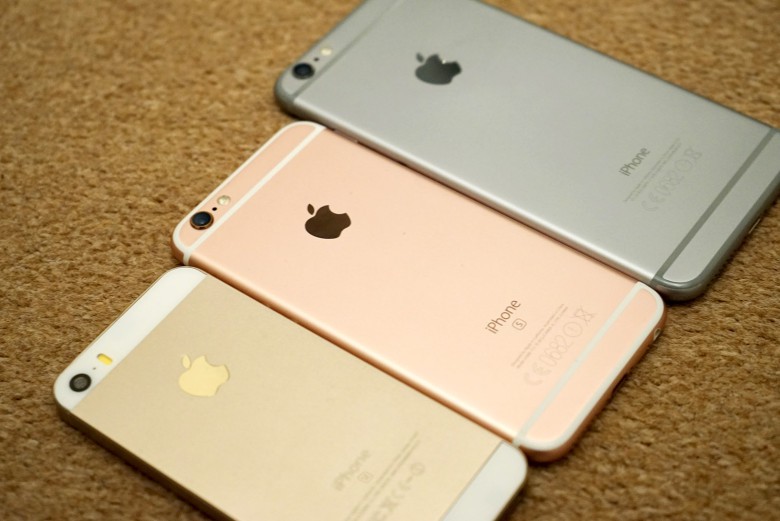
Photo: Stephen Smith/Cult of Mac
The iPhone 6s, 6s Plus and SE models offer 4K video recording, while the older iPhone 6 and 6 PLus will record up to 1080p. The S and SE models give you slo-mo video support for 1080p at 120 fps and 720p at 240 fps, while the older 6 and 6 Plus models will give you slo-mo video at 120 fps or 240 fps. All models use a True Tone Flash for better photos in low light.
The newer models (iPhone 6s, 6s Plus and iPhone SE) have a 12-megapixel camera, but all models have a sensitive ƒ/2.2 aperture. Only the newer models offer Live Photos, while only the 6 Plus and 6s Plus have optical image stabilization features.
There’s a 5 megapixel Facetime camera on the iPhone 6s and 6s Plus, but only a 1.2 megapixel camera on the front of the iPhone 6, 6 Plus, and SE. Only the newer iPhones offer the Retina Flash feature, which lets your screen double as a flash.
iPhone pricing
There are a variety of ways to finance your new iPhone, whichever model you choose. The easiest way to compare them all, however, is by base price.
The iPhone 6s is $649 for the 16GB, $749 for the 64GB, and $849 for the 128GB. The iPhone 6s Plus is $100 more across the board, at $749, $849, and $949, respectively.
The iPhone 6 models only come in two capacities, starting at $549 for the 16GB model and $649 for the 64GB. The iPhone 6 Plus is $100 more for each capacity, at $649 for the 16GB and $749 for the iPhone 6 Plus.
The iPhone SE also only comes in 16GB and 64GB storage capacities, at $399 and $499, respectively.
Which is the best iPhone for you, then?
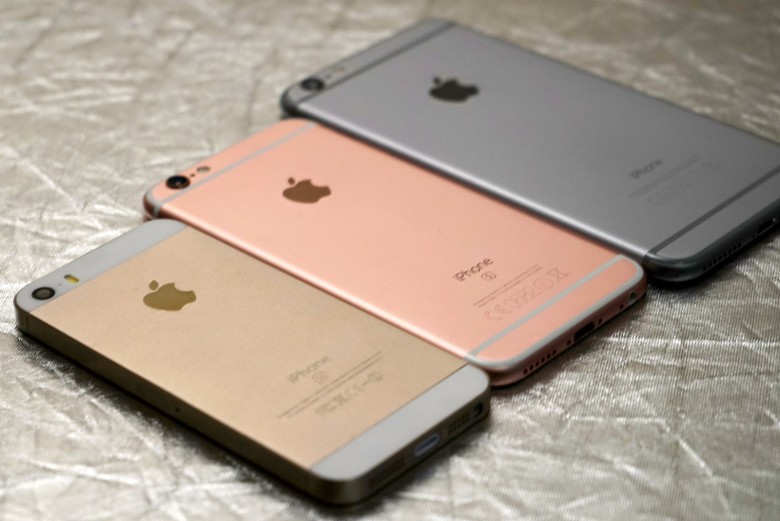
Photo: Stephen Smith/Cult of Mac
iPhone SE: The budget conscious and those with small hands
If you’re looking for a small smartphone with high-end internals, the iPhone SE should appeal. There’s nothing comparable on the Android side of things, either. This is, hands-down, the best small form-factor smartphone out there. It’s also the least expensive of all five available models.
iPhone 6s/6s Plus: Techies, professionals and gamers
Anyone with a need for high-end specs should look at the S line. This updated iPhone has all the newer tech in it that makes it a cut above the original 6 iPhones, with an extra 128GB option for storage. The 6s Plus is fantastic for gamers and those who want to have better performance across the board, and those who want image stabilization with their higher-end insides.
iPhone 6/6 Plus: The rest of us
My iPhone 6 Plus still handles everything I can throw at it, and then some. Games, photography, photo editing, web browsing, and (of course) texting and calling are all easily managed with the “older” model iPhones. Also, they’re $100 less than the S models, which might be a factor in your choice. A perfect all-around iPhone for everyone, the 6 and 6s is a fantastic choice for normal folks.
So, which iPhone is best?
Bottom line: Deciding which iPhone is best for you is going to be a highly personal decision. They’re basically all great smartphones, but your budget and particular usage demands will steer you toward one model or the other.
So, whether you’re getting your first iPhone or trading in your old iPhone for cash, hopefully this buyer’s guide for the iPhone has provided enough fodder for you to face this momentous decision without much worry.
Remember: Preorders of the new iPhone SE start Thursday, March 24, at (most likely) 12:01 a.m. Pacific. Download the Apple Store app, set an alarm on your current iPhone, iPad or Apple Watch, and do the right thing.
If you’re looking at iPads, check out our iPad guide as well.
